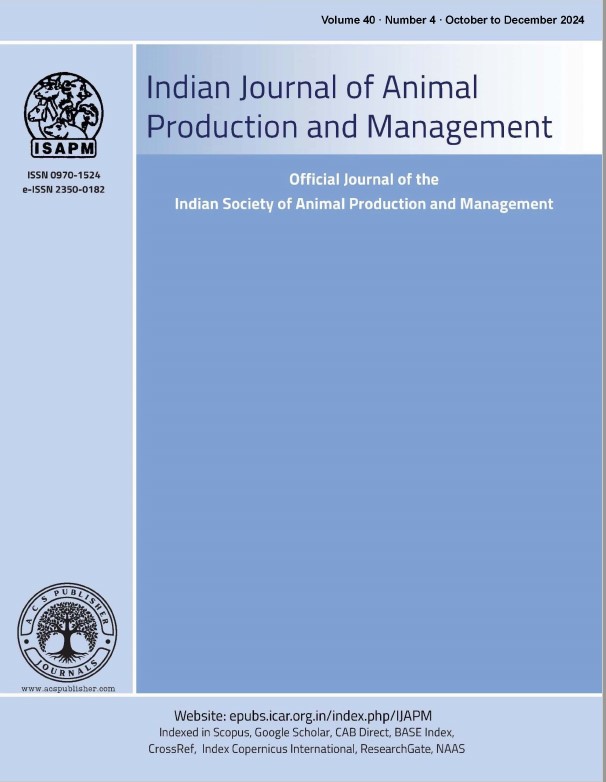Causes of reasons for disposal of Kankrej cattle at an organized farm
Keywords:
Culling, Disposal, Kankrej, Low milk production, Reason, Reproductive disorder, Udder problemsAbstract
An analysis was performed to study the reasons for disposal of Kankrej cattle at an organized farm. Data were collected from different disposal and production records from January 2003 to December 2013 and these were analyzed by using frequency and per cent basis. The overall mean annual disposal of Kankrej cows at LRS, Sardarkrushinagar was 20.36 ± 02.20 and contributed 18.91 ± 02.29 and 01.45 ± 00.34 nos., respectively for culling due to various reasons and death. The overall per cent disposal of cows was 18.71, contributing 17.38 and 01.34 per cent, respectively due to culling and death. The results showed that reproductive disorders (30.80%), low milk production (19.20%) and udder problems/ blind teat (17.86%) were the major reasons for culling of adult Kankrej cows followed by minor reasons like old age (09.82%), sale to other institute (08.93%) and death (07.14%), off breed (02.68%), vices (01.79%), diseases (01.34%) and inferior growth (00.45%). The culling of cows due to involuntary reasons (reproductive disorders, udder problems and diseases) accounts 50 per cent of total disposal of Kankrej cattle herd of the research station. Highest number (34) of Kankrej cows were culled in the year 2011. The highest per cent culling (18.75) was practised in first lactation and lowest (05.80) in the seventh lactation. However, 70.09, per cent of cows were culled up to the fourth lactation. Highest numbers (69) of cows were culled due to reproductive disorder followed by low milk (43) production. Majority of cows were culled due to low milk production and culled up to third third lactation. The high involuntary culling rate not only makes the dairy enterprises economically less profitable but also reduces the genetic improvement by lowering the selection differential for milk production.

